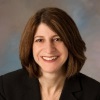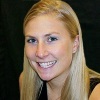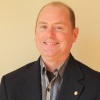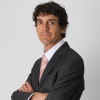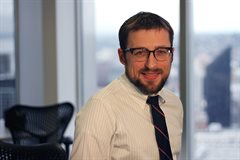In an effort to “Pay It Forward,” SE University is happy to announce our “SEU Speaker Inspires” program in which our speakers can designate a charity/organization of their choice for SE University to make a donation to help improve our world.
In October 2015, Carol Drucker, SE, PE from Drucker Zajdel Structural Engineers gave a talk on Understanding Load Paths for SE University. She chose the Structural Engineers Foundation (http://seaoi.org/sef.htm) for the donation of the month.
Carol said the following about the Structural Engineers Foundation, “SEF is dedicated to the advancement of structural engineering through free lectures and the funding of scholarships, research, and publications.”
Thank you, Carol, for helping structural engineers with your SE University session, and for your designation of the Structural Engineers Foundation as our SEU Speaker Inspires Organization of the Month!
[seublog]
23 Oct / 2015
Don’t Simply Survive, THRIVE
by Kristine Kussro
It’s October! We know this because of the beautiful colors that fall and October brings. The vibrant reds, oranges and yellows of the changing trees create spectacular scenery and brilliant landscapes. But we have also come to know October for another color: PINK! October is National Breast Cancer Awareness Month. So we see pink and pink ribbons everywhere! Pink ribbon apparel is the rage all of a sudden come October. All the sporting goods stores become flooded with pink ribbon apparel. We even see the college and professional athletic teams go all out with pink shoes and accessories.
Did you know that 1 in 8 women will be diagnosed with breast cancer? Almost 300,000 new cases of breast cancer will be diagnosed in the U.S. this year alone. Worldwide there will be 1.3 million cases diagnosed. Breast cancer will take over 40,000 lives in the U.S. this year and 448,000 worldwide. For women, breast cancer is by far the most common cancer.
With these statistics, Breast Cancer Awareness Month, which is marked in countries across the world every October, has become more decorative than ever before. The goal is to increase attention and support for the awareness, early detection and treatment of breast cancer. With insufficient knowledge of the exact causes of breast cancer, early detection of the disease remains the cornerstone of breast cancer control. When breast cancer is detected early, and if adequate diagnosis and treatment are available, there is a good chance that breast cancer can be cured. If detected late, however, curative treatment is often no longer an option. So we must spread the word! Early detection is paramount. And education is the key to early detection. Mammograms and clinical and self-examinations are critical in preventing breast cancer and should be regularly discussed with each woman’s physician. Remind the women that you love, wives, mothers, sisters, daughters, and friends to be diligent!
I am the perfect example of diligence. And pink is my color. I am a three year breast cancer survivor! Diligence saved my life. But cancer changed my life. I was diagnosed in early 2012 with stage III breast cancer. My journey was long but not without cause. Faith, family, and friends got me through. My husband was my rock. My children: my reason to live. But what did I learn on my journey? I learned what true strength and courage are when you are facing paralyzing fear. Life is short and precious. And tomorrow may not come. But today I can make a difference! It seems so simple. But in our busy lives we tend to ignore what seems obvious. My advice to everyone, take time to smell the coffee. Take that vacation with your family that you never seem to have time to do. Look for that new job, the one you’ve always dreamed of. Quit procrastinating because the current one seems safe. Go bungee jumping! Go skydiving! Be STRONG! Be COURAGEOUS! Be BOLD! My motto: “Don’t simply survive, THRIVE!”
My family’s journey has been long. But life happens and we can’t change it. Would I want to change it? Probably not. Adversity makes us stronger. It builds character. And as my husband so eloquently put it “We’ve had more laughter than tears along the way.”
Happy October! Think PINK!!
Please feel free to e-mail me at Kristine.Kussro@LearnWithSEU.com with any comments.
In an effort to “Pay It Forward,” SE University is happy to announce our “SEU Speaker Inspires” program in which our speakers can designate a charity/organization of their choice for SE University to make a donation to help improve our world.
In September 2015, Emily Guglielmo, SE, from Martin/Martin, Inc., gave a talk on Clarifying Frequently Misunderstood Wind Provisions for SE University. She chose Bridges to Prosperity (www.bridgestoprosperity.org) for the donation of the month.
Emily said this about her choice, “Bridges to Prosperity believes that every person has a right to safe access and has engineered innovative, scalable approaches to act on that belief. As an engineer, it’s inspiring to see other engineers using their passion for the profession to implement real change in the world.”
Thank you, Emily, for helping structural engineers with your SE University session, and for your designation of Bridges to Prosperity as our SEU Speaker Inspires Organization of the Month!
[seublog]
31 Aug / 2015
“If There is Any One Secret of Success…”
In the Dale Carnegie Training book “How to Enjoy Your Life and Your Job“, the following “profound” statement is made…
“So the only way on earth to influence other people is to talk about what they want and show them how to get it.”
It may sound simple, but it can be harder to implement. Give it a try today and send us your stories of how it was successful for you.
28 Aug / 2015
“SEU Speaker Inspires” Organization of the Month: Juvenile Diabetes Research Foundation
In an effort to “Pay It Forward,” SE University is happy to announce our “SEU Speaker Inspires” program in which our speakers can designate a charity/organization of their choice for SE University to make a donation to help improve our world.
In July 2015, Whitney McNulty, PE, from BL Companies, gave a talk on Flexural Design of Single Angle Members for SE University. He chose the Juvenile Diabetes Research Foundation (http://www.jdrf.org/) for the donation of the month.
Whitney said this about his choice, “I chose the Juvenile Diabetes Research Foundation for personal reasons. Both of my children have juvenile onset diabetes, also known as type 1 diabetes. This isn’t the diabetes for which you see all of the drug commercials on TV. My son who is now 22 developed the disease when he was 11. My daughter, now 19, became diabetic when she was 10, less than one month from the anniversary of my son’s date. When my son became diabetic my wife and I had no history of diabetes in either of our families. The doctors told us there was less than a 2% chance that siblings who are not twins will both develop the disease, so we thought that our daughter was safe. Now both of my children have insulin pumps that they wear 24 hours a day, everyday. They test their blood at least 7 times a day, and we have experienced very high and low blood sugars. We’ve had a few visits from 911 personnel, including one time when the police had to break down a door to get into my house to help my son. You can’t tell from looking at my children that they are diabetics, unless you notice their pumps, and they try to not let the disease limit their lives. My prayer is that a way to prevent this condition is discovered, and that in the meantime, the lives of type 1 diabetics can be made easier by the work done by the JDRF.”
Thank you, Whitney, for helping structural engineers with your SE University session, and for your designation of the Juvenile Diabetes Research Foundation as our SEU Speaker Inspires Organization of the Month!
[seublog]
29 Jul / 2015
The Value of Being Patient
by Lisa Willard, PE
In the Dale Carnegie Training book “Make Yourself Unforgettable”, one of the chapters is devoted to patience, defining it as “the ability to wait without experiencing anger, anxiety, or frustration.” One thing I find interesting about patience is that it is something over which I have complete control. No one else can make me impatient; someone else’s actions may lead to me being impatient, but I have the ability to define my attitude, and can choose to be patient in the situation.
As an example, someone may not return a call promptly, and I need information from that person before I can proceed with something I’m working on. If I choose to be impatient, I waste time and mental energy being upset, not to mention the fact that I might eventually “blow up” at the person by phone or in an email. If I choose to be patient, I can refocus my mind and time on another project or task, taking advantage of that time to get other things done. In addition, I avoid a confrontation with the person that might affect our relationship.
As a young professional, I made a reservation for a non-smoking room at a hotel, and when I arrived at the hotel (at earlier than normal check in time), there were no non-smoking rooms available. My first instinct was to react with frustration – after all, I had made a reservation (has everyone seen the Seinfeld clip where Jerry arrives to pick up his rental car, but there are no cars left?). My boss quickly pulled me aside, and asked if, based on my attitude, I thought the front desk staff was going to be willing to help me get a non-smoking room? I realized that he was right – I needed to exhibit patience in this situation. If I were willing to wait an hour or two, a non-smoking room would likely be available. I returned to the front desk, apologized for my behavior, and agreed to wait for a few hours. I ended up with a non-smoking room, and rest of the trip went smoothly.
I learned a powerful lesson that day, one that has served me well over the years. People appreciate when others do not react with impatience (anger, anxiety, frustration), and are typically more willing to be helpful in that situation. What are some situations where you have seen patience (or impatience) exhibited, and what was the outcome in those situations? Let us know in the comments below!
In an effort to “Pay It Forward,” SE University is happy to announce our “SEU Speaker Inspires” program in which our speakers can designate a charity/organization of their choice for SE University to make a donation to help improve our world.
In June 2015, Seth Guthrie, SE, from Bentley Systems, Inc. gave a talk on Software Default Settings and Effects on Structural Models for SE University. He chose Engineers Without Borders (http://www.ewb-usa.org/), for the donation of the month.
Seth said this about his choice, “The mission of Engineers Without Borders to “build a better world through engineering projects that empower communities…” is perfectly aligned with the Bentley motto, “Sustaining Infrastructure” and my own guiding principles as an engineer. I think EWB is one of the most effective groups actively working on global problems today.”
Thank you, Seth, for helping structural engineers with your SE University session, and for your designation of Engineers Without Borders as our SEU Speaker Inspires Organization of the Month!
[seublog]
30 Jun / 2015
“SEU Speaker Inspires” – Organization of the Month: University of Washington Department of Civil Engineering
In an effort to “Pay It Forward,” SE University is happy to announce our “SEU Speaker Inspires” program in which our speakers can designate a charity/organization of their choice for SE University to make a donation to help improve our world.
In May 2015, Ian McFarlane, PE, SE, from Magnusson Klemencic Associates gave a talk on Mat Foundations and Soil Structure Interaction for SE University. He chose University of Washington Department of Civil Engineering (http://www.ce.washington.edu/), for the donation of the month.
Ian said this about his choice, “UW CEE not only gave me a fantastic technical background and got me involved in exciting research topics, but they also provided an excellent balance by frequently involving practicing engineers in the curriculum. This frequent exposure to practicing engineers was very beneficial to me and ultimately led to my position at MKA which makes me extremely grateful!”
Thank you, Ian, for helping structural engineers with your SE University session, and for your designation of University of Washington Department of Civil Engineering as our SEU Speaker Inspires Organization of the Month!
30 Jun / 2015
Top Qualities – Positive Attitude
We were slow to get responses from last month’s article soliciting what characteristics of your best supervisors or colleagues inspired you to always improve and become better. So, for this month I wanted to provide my own reflection. My story comes from when I was a co-op student at Purdue living with my aunt & uncle in Indianapolis for a combined 5 semesters. They are wonderful people and I learned a lot by living there.
I would say the trait they had that was most inspiring was a positive attitude. Despite the many challenges of life, I can’t remember them ever having a negative response to anything. They focus on the positive side of things and seem to always respond in a helpful way, even in difficult situations. I always felt better after being around them and inspired to work hard for a positive outcome.
Have you ever noticed anything similar with people you know – where you always feel better after a conversation with them and feel inspired to accomplish more and have a more positive impact on others? What if we all could work on this trait each and every day? Any time you sense having a negative response to a situation, think about it before you react and either don’t say anything negative, or come up with a positive response.
We look forward to hearing your feedback and ideas. Have a wonderful and safe July!
In an effort to “Pay It Forward,” SE University is happy to announce our “SEU Speaker Inspires” program in which our speakers can designate a charity/organization of their choice for SE University to make a donation to help improve our world.
In April 2015, Cathleen Jacinto, PE, SE, gave a talk on Checklists to Assist the Structural Engineer During Construction Administration for SE University. She chose Cancer Research Institute (http://cancerresearch.org), for the donation of the month.
Cathleen said this about her choice, “Cancer Research Institute is a great organization advancing research in several types of cancer immunology, a disease affecting millions of people.”
Thank you, Cathleen, for helping structural engineers with your SE University session, and for your designation of Cancer Research Institute as our SEU Speaker Inspires Organization of the Month!
[seublog]

